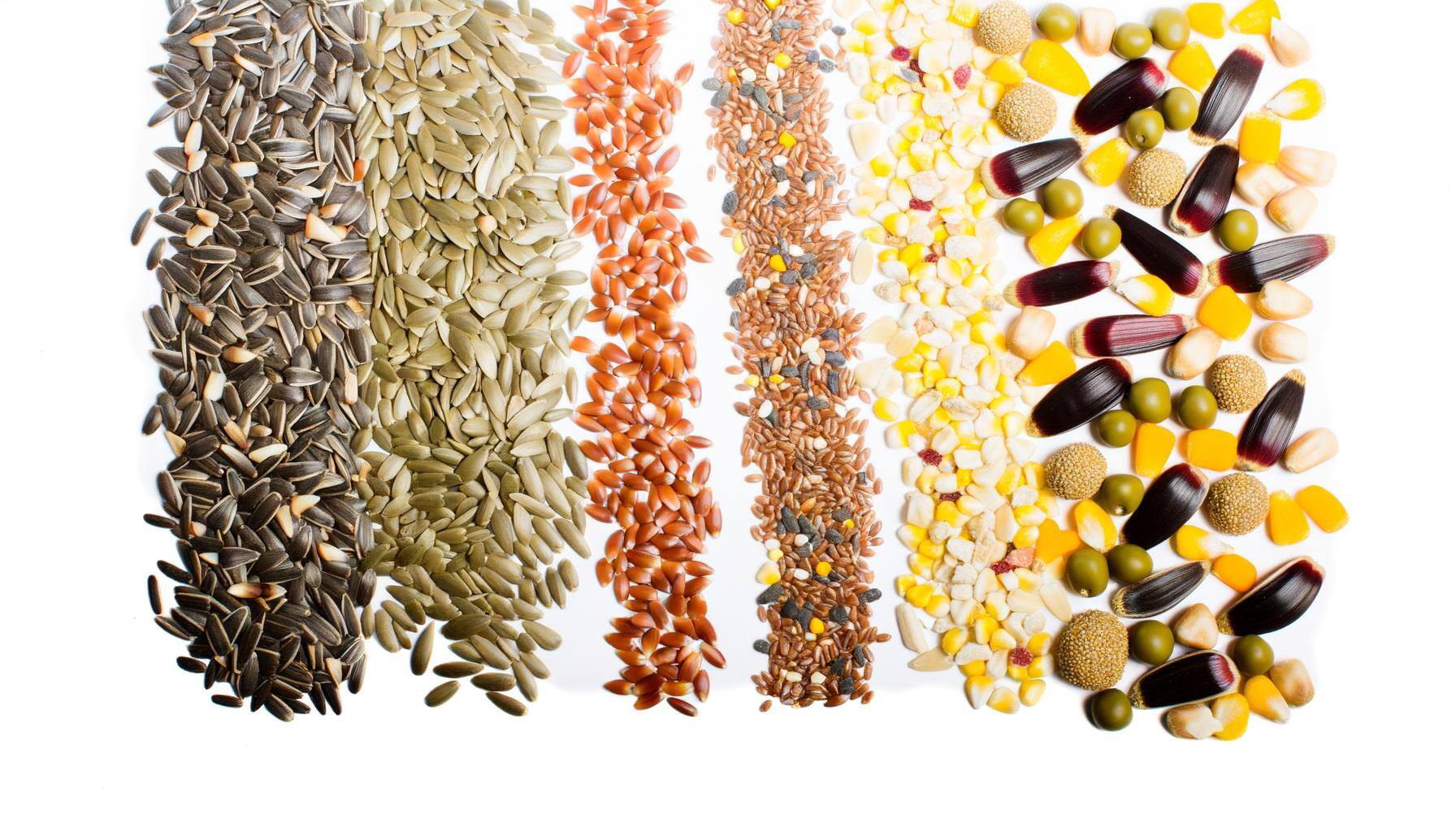The international pet food market is growing rapidly due to increasing pet ownership and changing consumer attitudes. In this article, we explore market size, key drivers, regional trends and future innovations shaping the industry.
International pet food market overview
The global pet food market was valued at approximately USD 130.8 billion in 2024, reflecting a robust industry driven by increasing pet ownership and the trend of treating pets as family members. The pet food market size is projected to grow to approximately USD 192.8 billion by 2033, indicating substantial growth potential. North America, a major player in this market, is projected to reach approximately USD 136.4 billion by 2030, growing at a CAGR of 8.22% from 2025. This growth is largely fueled by the high pet ownership rates and the demand for premium pet food products.
European consumers are also significantly influencing pet food trends by prioritizing high-quality, wellness-oriented products. The European pet food market is growing at approximately 5.1% annually, with sales reaching around €29.1 billion.
In the Asia Pacific region, the pet care market is expected to reach USD 29 billion by 2024, driven by the increasing humanization of pets. This trend of viewing pets as family members is significantly driving the demand for premium and specialized pet food products globally.
Key growth drivers in the international pet food market

The COVID-19 pandemic led to a notable increase in pet adoption, with around 2 million pets adopted in the U.K. alone during lockdown. This surge in pet ownership is a key driver of pet food market growth, as more pet owners are willing to invest in high-quality, nutritious pet food options. In China, pet ownership saw a remarkable 113% growth from 2014 to 2019, reflecting a global trend towards pet companionship. Demographic changes, rising income levels, and the movement of viewing pets as family members are contributing to the increased demand for premium pet food products.
E-commerce has transformed how consumers purchase pet food, allowing for easy online research and shopping. Online sales are becoming increasingly significant in the pet food market as they align with consumer preferences for convenience and variety.
Additionally, pet treats are increasingly formulated with health benefits, focusing on ingredients that support overall wellness. The pet food market is prioritizing fresh and functional recipes to meet evolving consumer demands for pet health.
Challenges facing the global pet food market
The pet food industry faces significant supply chain complexities due to the need for high-quality raw materials from diverse sources. Fluctuations in raw material availability and prices can severely influence production costs in the pet food sector. Additionally, variability in international regulations necessitates careful compliance management for companies operating across borders in the pet food market. Ensuring quality control can be challenging when outsourcing production to co-packers in the pet food industry.
The competitive landscape is marked by increasing mergers and acquisitions as companies strive for market leadership. Mars Petcare, for instance, is in the process of acquiring Champion Petfoods, representing a significant consolidation in the industry.
These challenges underscore the importance for pet food companies to innovate and adapt to changing market dynamics while maintaining compliance with international regulations.
Market segmentation by animal type
The pet food market is divided into segments based on pet animals type, primarily focusing on dogs, cats, and small animals. Each segment has its own unique trends and demands, driven by the specific needs and preferences of pet owners.
In the following sections, we’ll delve into the dominance of dog food, the trends shaping the cat food market, and the expanding market for other pets.
Dog food dominance
.jpg?width=2048&height=1147&name=Untitled%20design%20(27).jpg)
Dogs hold the highest market share in the pet food industry, a trend driven by rising pet ownership and the increasing humanization of pets. There is a growing willingness among pet owners to invest in natural and organic dog food, fueling market premiumization. There is also a growing demand for dog food products tailored to specific health requirements, such as weight management and allergies.
Curated selections of premium brands in specialty pet stores cater to specific dietary needs. These stores play a crucial role in assisting pet owners in making informed product choices based on their pets’ specific needs. With knowledgeable staff and a variety of premium products, specialty pet stores have become go-to destinations for pet parents looking to provide the best nutrition for their dogs.
Cat food trends
.jpg?width=2048&height=1365&name=Untitled%20design%20(28).jpg)
The focus on protein-rich diets is increasingly shaping cat food trends, as owners prioritize health and nutrition for their feline friends. There is a rising trend for cat owners to prefer high-protein wet food options in their cats’ diets. Wet cat food options are gaining popularity due to their appeal to both cats’ taste preferences and hydration needs. Soft natural cat food products dominate the premium segment, making up 70% of consumer spending in that category.
These stores offer premium and unique pet food options that are often unavailable in larger retail outlets. These stores cater to the increasing number of cat owners, driving demand for diverse, health-focused cat food options.
Other pets

The market for food tailored to small mammals and birds is expanding, focusing on specific dietary requirements unique to these animals. Dietary needs for small mammals often include high fiber content, which is crucial for their digestive health. Enrichment treats designed for small animals and birds are gaining popularity, as they help stimulate these pets both physically and mentally.
Specialty retailers frequently carry niche products that are not commonly found in larger grocery or mass-market stores. These stores provide a valuable service by offering products that cater to the specific needs of small pets, enhancing their overall well-being.
Product form analysis
Product form analysis is crucial in understanding consumer preferences and market dynamics in the pet food industry. The market is segmented into dry pet food, wet pet food, and treats, each with its own unique advantages and consumer base.
We will investigate the popularity of dry pet food, the rising demand for wet pet food, and the expanding treats and snacks market.
Dry pet food popularity
.jpg?width=2240&height=1260&name=Untitled%20design%20(39).jpg)
Dry pet food dominates the global market, preferred for its convenience, extended shelf-life, health benefits, and cost-effectiveness. Pet owners appreciate the ease of storage and feeding that dry food offers, making it a staple in many households.
Dry pet food’s balanced nutrition and cost-effectiveness drive its high demand. This form of pet food is particularly popular among busy pet owners who value convenience without compromising on quality.
Wet pet food growth
.jpg?width=2240&height=1260&name=Untitled%20design%20(40).jpg)
Wet pet food is becoming more popular due to its appealing taste and texture for pets. Wet pet food often contains higher moisture content, which can contribute to better hydration for pets. This is particularly beneficial for pets with urinary health issues or those who need additional moisture in their diet.
The appeal of wet pet food stems from its high palatability, making it more attractive to picky eaters. As pet owners become more aware of the nutritional benefits associated with wet food, its popularity continues to grow.
Treats and snacks
.jpg?width=1365&height=2048&name=Untitled%20design%20(25).jpg)
The snacks and treats segment in pet food is expanding through the introduction of innovative and healthy options geared towards pet well-being. Health-conscious pet owners are opting for treats that offer functional benefits, such as dental health and improved mobility.
Treats are increasingly used not just for reward but also for promoting training and enhancing the health of pets. The trend of humanizing pets is leading to increased demand for premium and ethically sourced dog treats.
Distribution channels in the international pet food market
The international pet food market utilizes various distribution channels, including supermarkets, specialty shops and online platforms. These channels play a crucial role in ensuring that pet food products are accessible to a wide range of consumers.
We will discuss the role of retail stores, the growth of e-commerce, and the significance of specialty pet stores in the pet food market.
Retail stores
Studies indicate that consumers generally prefer shopping in physical stores due to the convenience they offer for purchasing pet food. The physical presence of supermarkets and hypermarkets allows consumers to evaluate pet food products directly, enhancing their shopping experience.
Supermarkets and hypermarkets are important distribution channels for the pet food market, enabling access to a wide variety of brands and products. These retail channels are expected to account for about 62.7% of the market share in 2024.
E-commerce expansion
Online pet food sales have experienced rapid growth, significantly altering traditional retail landscapes. The increasing adoption of e-commerce platforms has made pet food more accessible to consumers, providing them with the convenience of shopping from home.
Millennials are increasingly preferring to shop online for pet food, valuing convenience and variety. Subscription services have become popular among pet owners, providing regular delivery of pet food directly to their homes.
Specialty pet stores
Specialty pet stores play a crucial role in the distribution of premium pet food products. These stores cater to the growing demand for high-quality, specialized pet food that meets specific dietary needs.
The presence of specialty pet stores encourages consumer awareness and choice regarding premium pet food options. They offer unique products tailored for pets with allergies or dietary restrictions.
Regional insights
.jpg?width=960&height=605&name=Untitled%20design%20(14).jpg)
Regional insights provide a deeper understanding of market dynamics across different areas. North America, Europe, and Asia Pacific are key regions in the international pet food market, each with unique trends and growth drivers.
In the following sections, we’ll explore the market share, consumer preferences, and growth prospects in these regions.
North america
North America holds a significant market share of 40.6% in the global pet food market, with the overall U.S. pet food market valued at approximately $50 billion. The high pet ownership rates in North America significantly influence its leading market share position, with approximately 67% of U.S. households owning at least one pet. This strong market demographic drives the demand for a wide range of pet food products.
The demand for premium pet food in North America is increasing as pets are increasingly viewed as family members. The premium cat food market, in particular, is projected to experience substantial growth, expected to reach $6 billion by 2028. This trend underscores the importance of high-quality, health-focused pet food options in the region.
Europe
The European pet food market has seen a significant rise in demand for organic products, with consumers increasingly seeking high-quality ingredients. The U.K. stands out as a significant player in the European pet food market, known for its demand for premium and organic products. This trend is driven by the growing awareness of pet health and wellness among European consumers.
The European market is increasingly leaning towards premium and natural pet food products. This shift reflects the rising consumer awareness and preference for high-quality, wellness-oriented pet food options. The focus on organic and natural ingredients is expected to continue driving market growth in the region.
Asia pacific
The Asia Pacific region shows immense growth potential in the pet food market, driven by rising pet ownership and urbanization trends. The region is experiencing rapid growth in pet food demand due to rising trends in pet adoption and urban lifestyles. Southeast Asian countries, particularly Thailand and India, are experiencing substantial market growth, with projected annual growth rates of 9.4% and 8.7%, respectively.
The Asia Pacific region is anticipated to see rapid growth in pet food sales, driven by rising urbanization and disposable income. This growth presents significant opportunities for pet food companies to expand their presence and cater to the evolving needs of pet owners in the region.
Future trends and innovations
The plant-based pet food segment is growing, with around 20% of consumers opting for vegan pet food for sustainability. The growth of plant-based pet food is gaining momentum as more pet owners explore meat alternatives for their pets. Sustainable packaging and environmentally friendly ingredients are becoming key factors for consumers choosing pet food. This trend reflects the growing focus on sustainability and environmental responsibility within the industry.
Personalized nutrition for cats is becoming popular, with owners looking for food tailored to their pets’ specific needs and lifestyles. Innovations in ingredient sourcing, such as using sustainable proteins like African game meat, are emerging in pet food formulations. These trends and innovations are expected to shape the future of the pet food market, driving continued growth and consumer engagement.
Partnering with GC Consulting for export
At GC Consulting, we specialize in helping your brand export pet products to global markets. With over 10 years of experience in exporting pet food from Europe to the rest of the world, we are your trusted partner for all export projects.
Suppliers need appropriate certifications and a qualified team to ensure effective export operations. It’s essential to comprehend the export eligibility criteria for different regions, including factory and product registration requirements. Awareness of acceptable and prohibited ingredients for various markets is crucial for compliance in exports.
Adhering to specific legislation relevant to each target market is crucial during the export process. It is important to ensure that packaging and labeling conform to export standards, including accuracy in language and translation.
Summary
In summary, the international pet food market is experiencing significant growth driven by increased pet ownership, the trend of treating pets as family members, and the rising demand for premium and health-focused pet food products. Key growth drivers include the expansion of e-commerce, the focus on pet health, and innovative product formulations. However, the market also faces challenges such as supply chain complexities and regulatory compliance. By understanding market segmentation, product form preferences, and regional insights, pet food companies can better navigate this dynamic industry. Partnering with experts like GC Consulting can further enhance their ability to succeed in global markets.
Frequently asked questions
What is the projected value of the global pet food market by 2033?
The global pet food market is projected to reach approximately USD 192.8 billion by 2033. This significant growth highlights the increasing demand for pet food worldwide.
How has the COVID-19 pandemic influenced pet ownership?
The COVID-19 pandemic significantly boosted pet ownership, as many individuals sought companionship during isolation, resulting in approximately 2 million pets adopted in the U.K. alone during lockdown. This trend highlights a growing commitment to pets as essential companions in challenging times.
What are the main challenges facing the pet food industry?
The main challenges facing the pet food industry include supply chain complexities, fluctuations in raw material availability, and the necessity for regulatory compliance in various international markets. Addressing these issues is crucial for sustaining growth and maintaining product quality.
Which region holds the largest market share in the pet food market?
North America holds the largest market share in the pet food market, accounting for 40.6% of the global total. This dominance highlights the region's robust demand for pet food products.
What future trends are shaping the pet food market?
The pet food market is increasingly shaped by trends such as the rise of plant-based diets, sustainable packaging solutions, personalized nutrition options, and innovative ingredient sourcing strategies. These trends reflect a growing consumer demand for health and sustainability in pet products.

.jpg)
.jpg)
.jpg)
